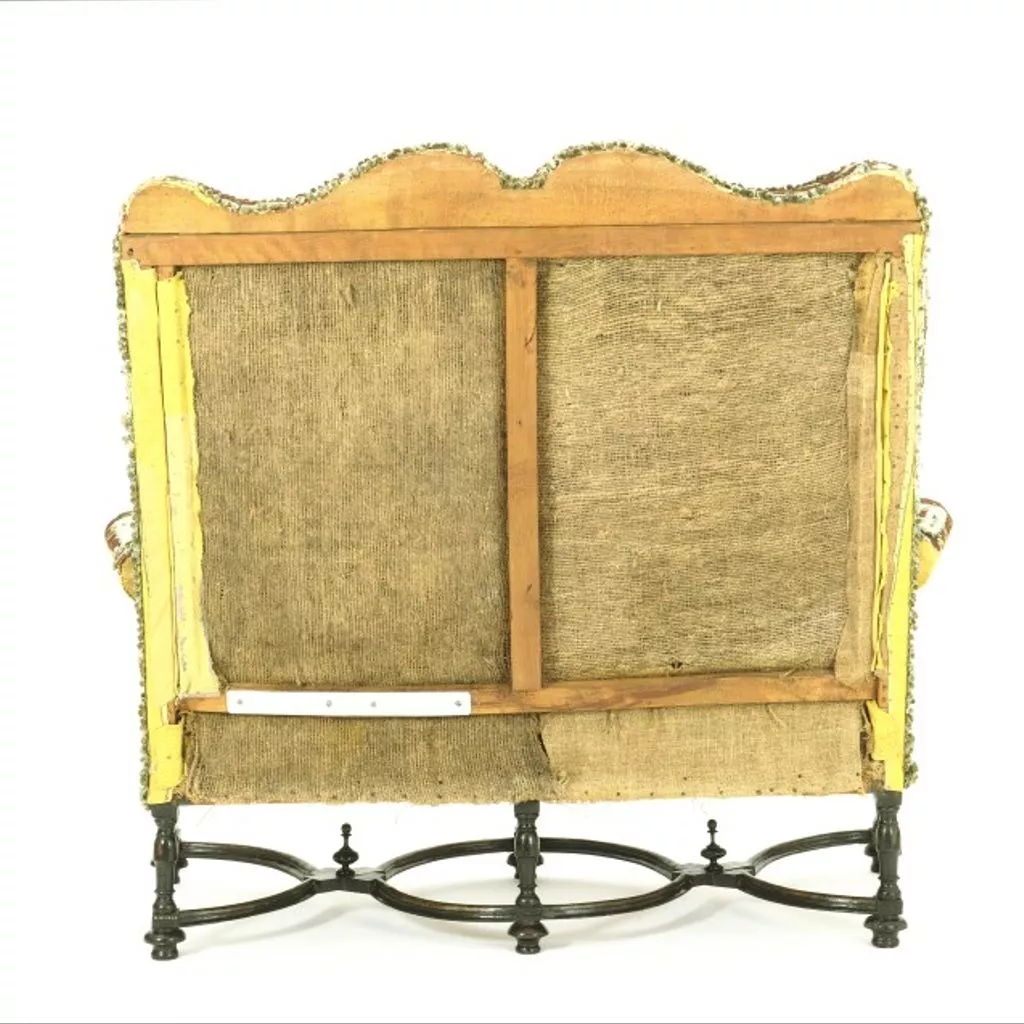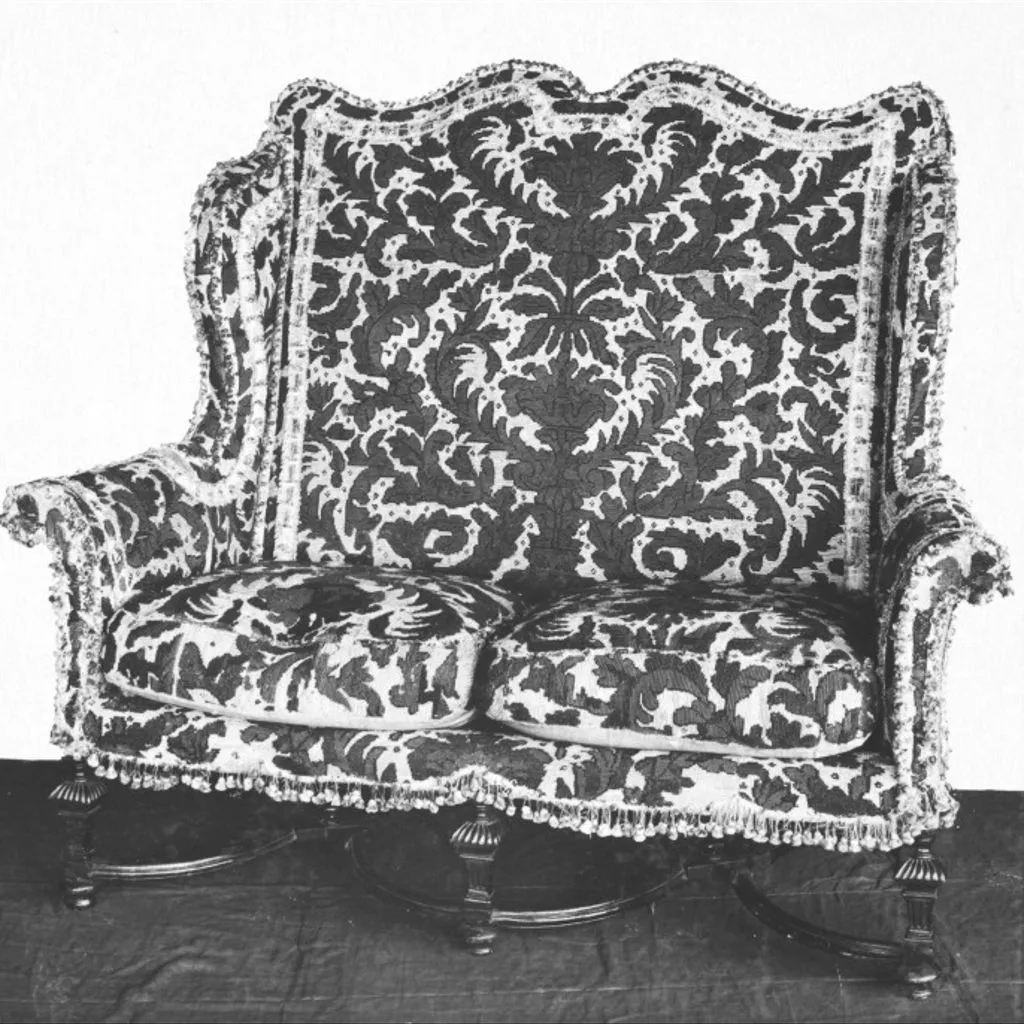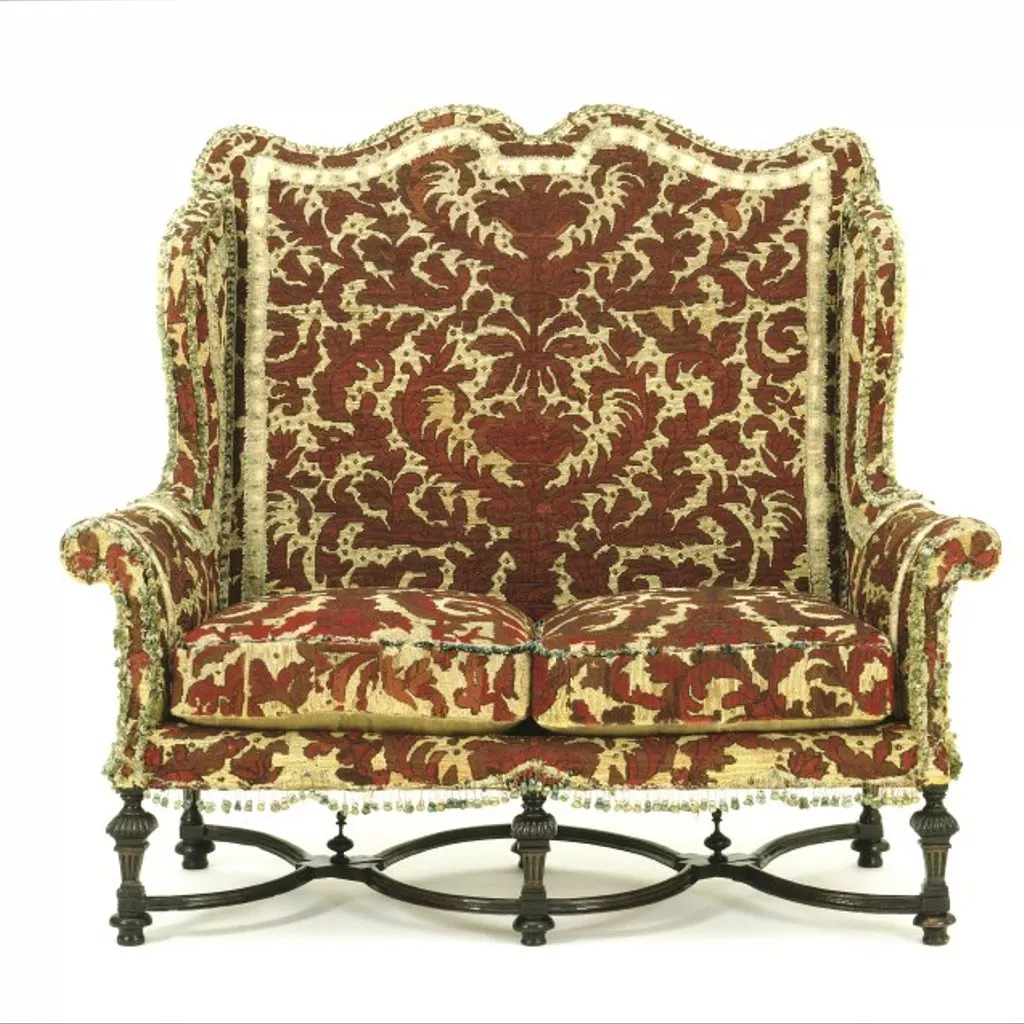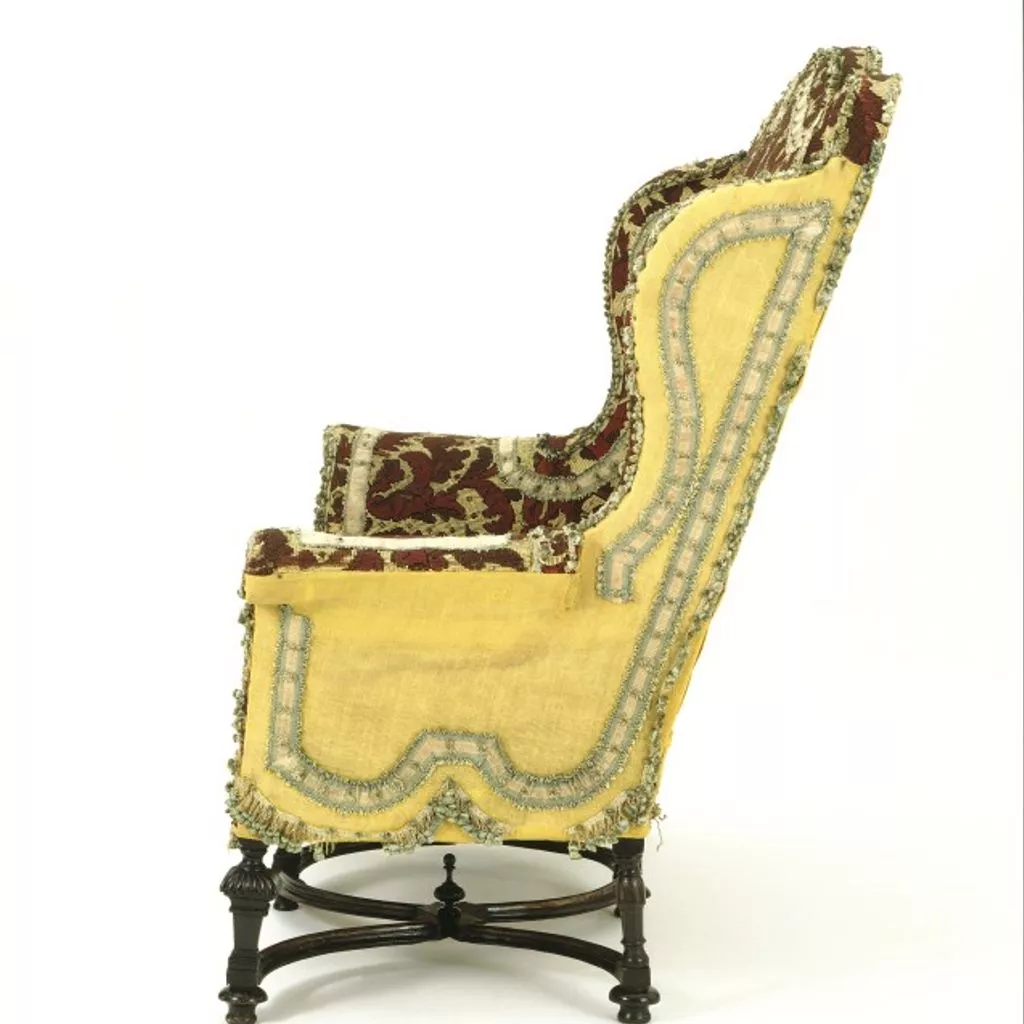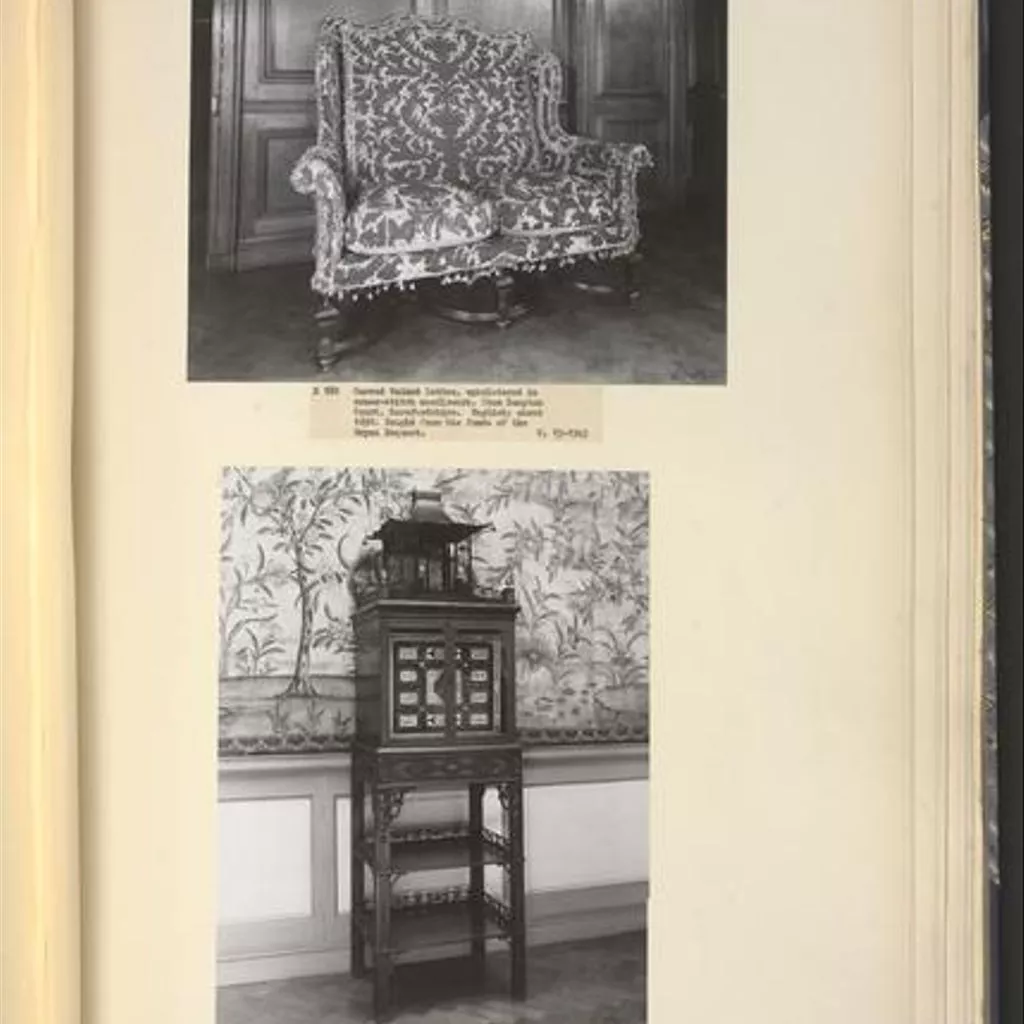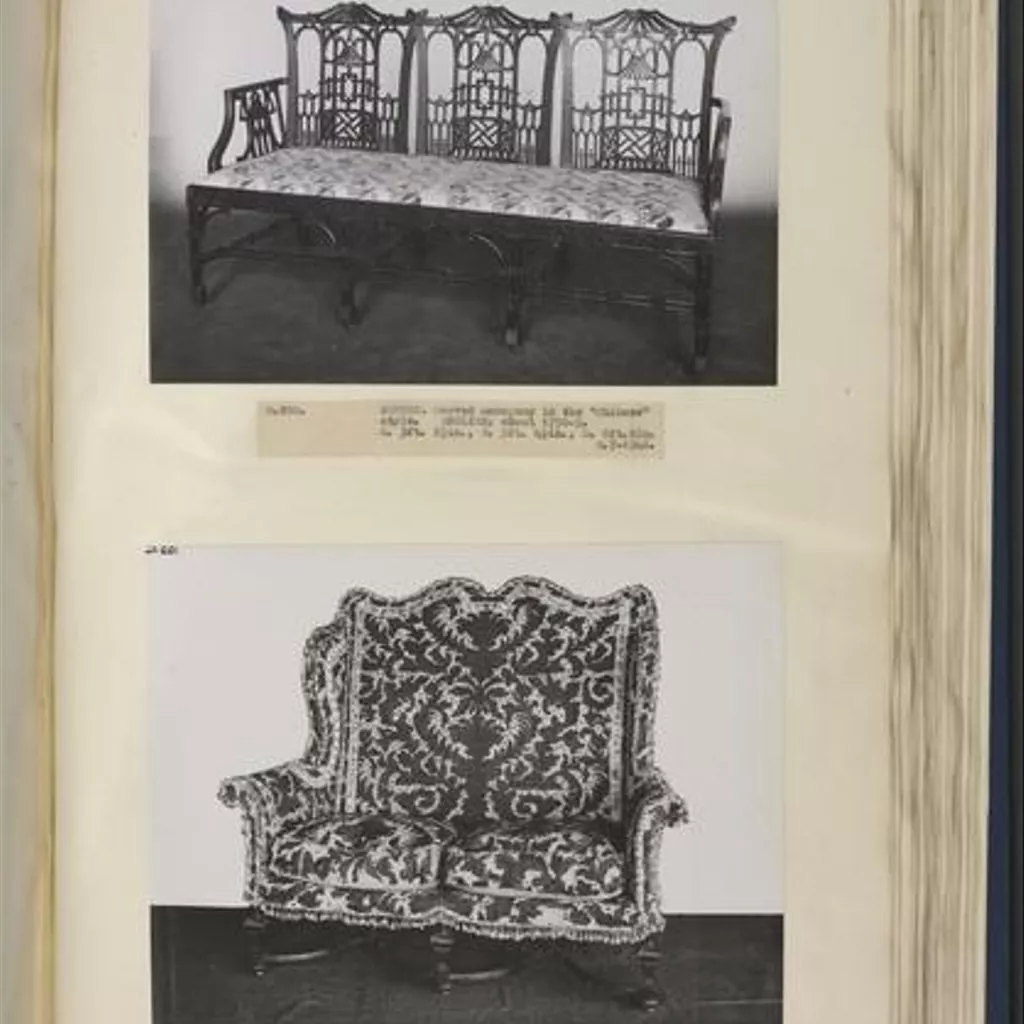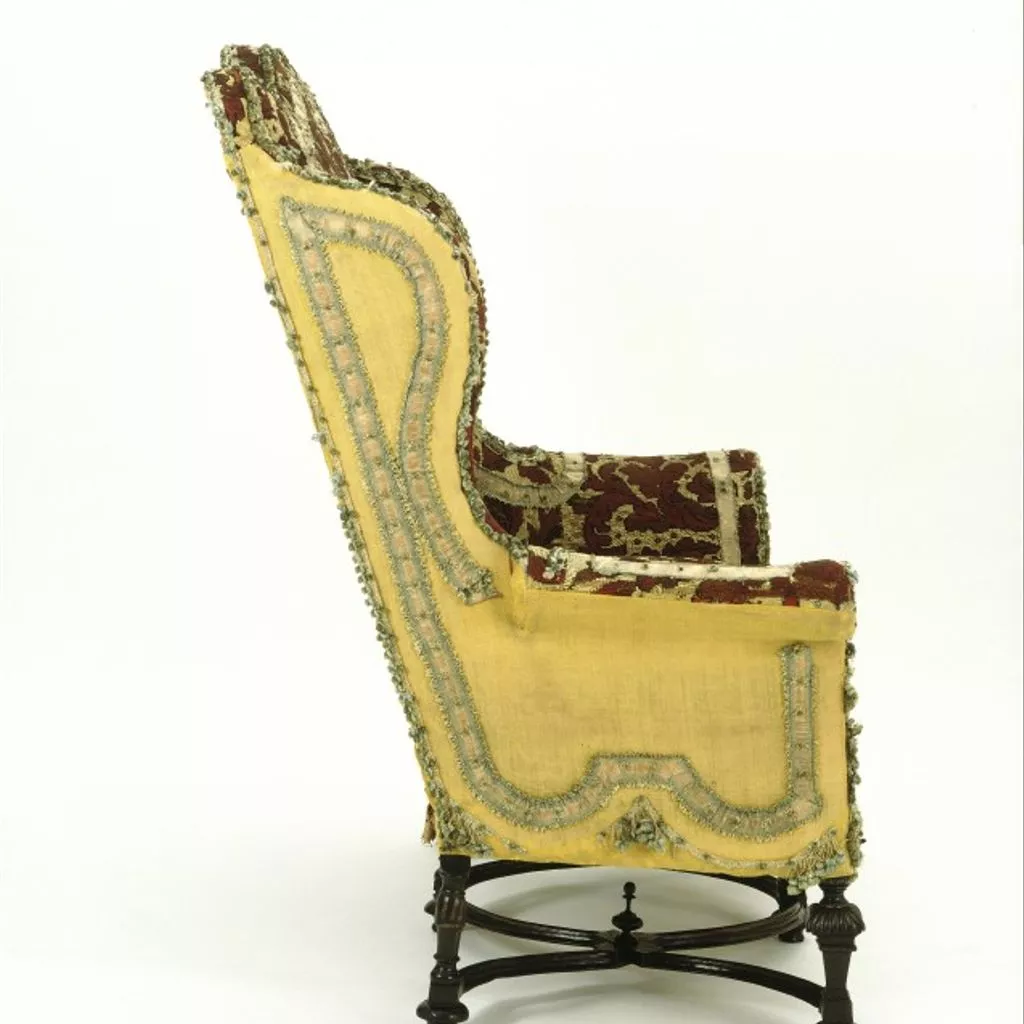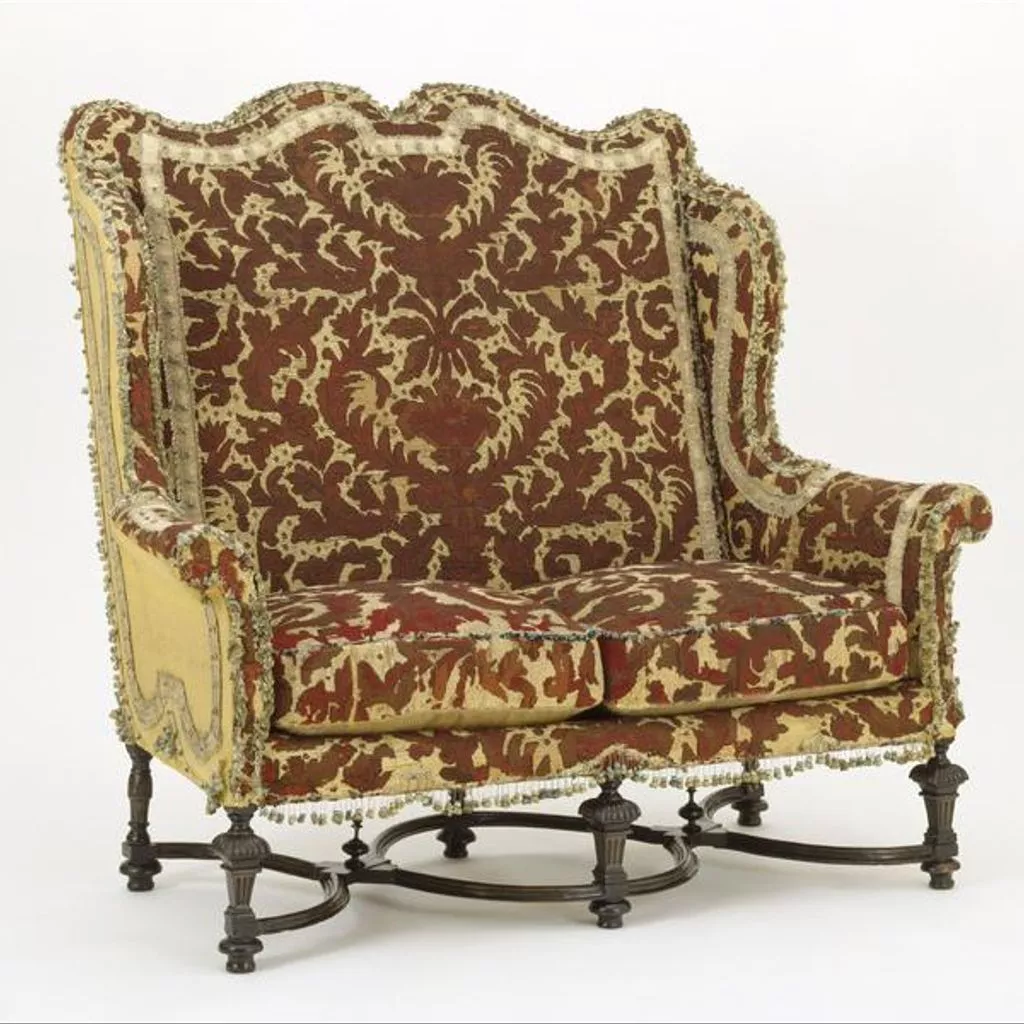1690 / 1700, England
1690 / 1700, England
- Identifier
- W.15:1 to 3-1945
- Acquisition
- Purchased with funds from the Bryan Bequest
- Collection
- Material
- Technique
- Depiction
- Floral motif 58%

- Floral motif 58%

- Floral motif 43%

- Vegetal motif 54%

- Vegetal motif 42%

- Vegetal motif 47%

- Geometrical motif 57%

- Geometrical motif 47%

- Geometrical motif 61%

- Geometrical motif 42%

- Floral motif 58%
- Dimension
- 95 cm (depth)137.8 cm (height)157.5 cm (width)
- Production time
- Production place
- Type of object
Description
In the 1690s upholstered settees formed part of the lavish furnishings of state rooms in great houses, which were created to display the wealth and status of the owner to visitors. They were not for day-to-day use. Often settees were supplied for the state bedrooms, along with sets of chairs to match. They were arranged around the walls of the room. The upholstery would match the hangings on the bed. This settee was probably made for Hampton Court, Herefordshire, for Thomas, Lord Coningsby (1656-1729), but we do not know which room it was for. It is unusual for the upholstery to have survived untouched.
Design & Designing
High-backed furniture was ideal for showing off expensive, brightly coloured fabrics. Unfaded fragments of the cover of this settee reveal strong red and yellow tones, contrasting with the blue braid and fringing. The settee is in the form of the 1690s, with a shaped top rail, outward-curving wings and scrolled arms.
Materials & Making
The cover is decorated with cross-stitch embroidery with a floral pattern imitating damask, a woven fabric. The legs and stretchers between them are carved and turned walnut, ebonised (painted black to look like ebony), with traces of gold stencilling. In the 1690s upholstered settees formed part of the lavish furnishings of the state rooms of a great house, which were created to demonstrate the wealth and status of the owner. Often, settees were supplied with sets of chairs ensuite, and were upholstered to match a state bed. Their high backs were ideal for showing off expensive fabrics, which were usually brightly coloured. Fragments of the embroidered covers which have not been exposed to the light reveal the strong tones of the original red and yellow thread, which would have contrasted with the blue of the braid and fringing. This settee was almost certainly commissioned by Baron Coningsby when he remodelled and refurnished his house in the 1690s. However, it is not known for which room it was intended or whether there were any chairs supplied ensuite. The legs of the settee match those of the settee and chairs in the King's bedroom, which were covered in crimson silk damask to match the bed. The King's bedroom was furnished in preparation for a possible visit by William III; there is no evidence that he actually visited the house. The V&A settee could have been supplied for another bedroom or an anti-chamber to a bedroom. The settee has a two seat back, with top covers of canvas work embroidery, two cushions, and exposed walnut legs. The legs and stretchers are carved and turned, and ebonised, with traces of gold stencilling. The three front legs are in the form of fluted columns with gadrooned cappings, connected by curving cross-stretchers, which have finials at the crossings. The back legs are turned. The upholstery is original and has never been removed, apart from the outside back cover. It is of cross-stitch canvaswork with a floral pattern imitating damask, in shades of red and brown wool on a background of yellow silk, now much faded. The outside back and sides of the settee are covered in plain yellow woven wool, called harrateen. The settee is decorated with cream and blue braid in linen and silk, and blue floss silk bell fringes, much worn and faded. Hampton Court settee, embroidered upholstery, English, 1690's Settee: about 1690, Walnut, upholstered in cross-stitch embroidery trimmed with galloon and fringed. From Hampton Court, Leominster. Bought with funds from the Bryan Bequest. Museum No. W.15-1945. John Hardy [1976] SETTEE ENGLISH; about 1690 Carved and turned walnut upholstered in cross-stitch needlework trimmed with galloon and fringed. Bought with the funds of the Bryan Bequest. The settee came from Hampton Court, Leominster, for which it was probably acquired by Thomas Coningsby, later Earl of Conynsby, an imperious and choleric gentleman of ancient family, who was one of the last of the nobility to employ a bard and jester. [pre October 2000]
